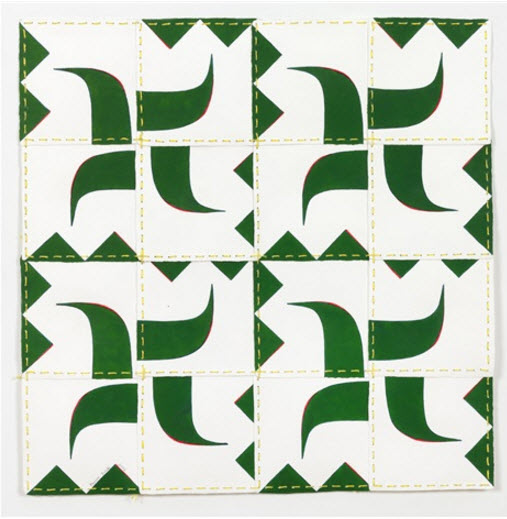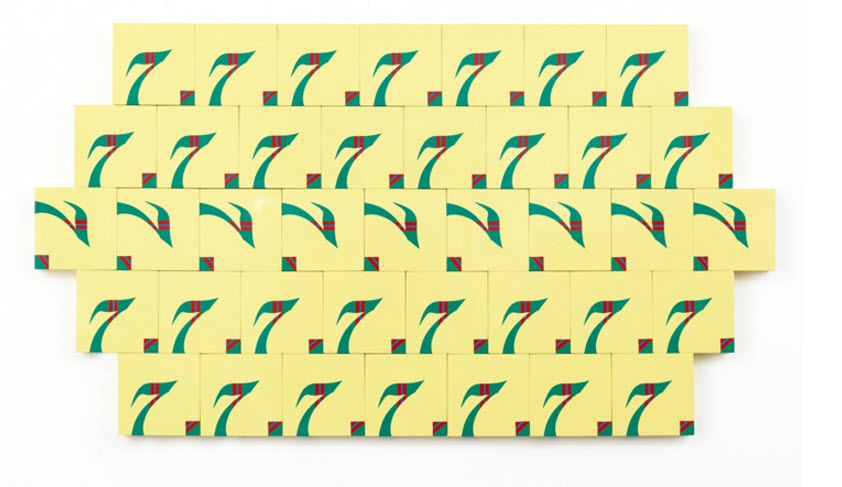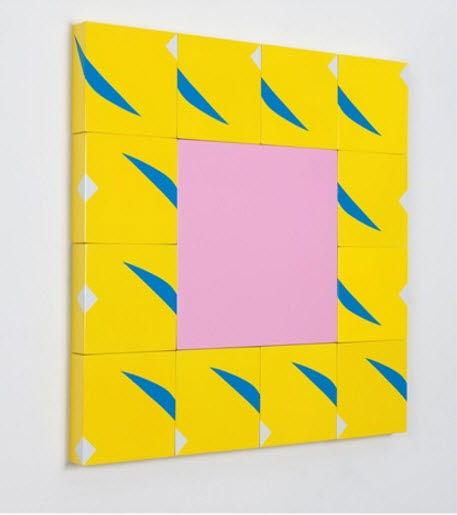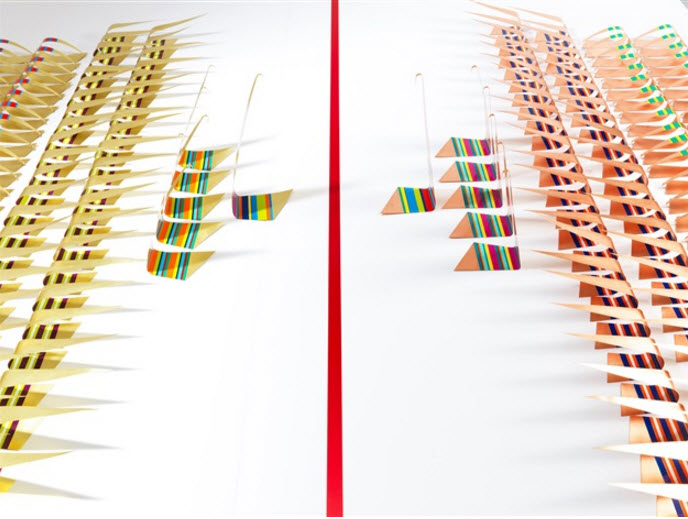People
artnet Asks: Artist Pouran Jinchi on Inventorying War
Her current exhibition is on view in Dubai through October 21.

Her current exhibition is on view in Dubai through October 21.

Artnet Galleries Team

Through quietly formal and exquisitely made work, Iranian artist Pouran Jinchi has assembled a bold exhibition that traces the lasting effects of war on contemporary society. With embroidery, sculpture, and metalwork, she explores military insignias and the pervasive power of symbols and language through her urgently coded messages.
Here, she discusses her current obsessions and how her background has shaped her practice. “The Line of the March” is on view at The Third Line in Dubai now through October 21.
Can you tell us about your process?
My art always begins with an idea, something gets triggered in my mind. I become focused entirely on this particular subject; it’s as though my brain edits out other things. My vision becomes myopic and as I do research on a given subject, I take it all in.
For my latest exhibit, The Line of March, I focused on militarism and I started to see its influence everywhere—online, in fashion, in films. I started to listen to brass bands, marching bands. I noticed the way military terms inflect our slang, how it penetrates popular TV shows, video games, even our food. When I am making art on a particular subject, my brain shuts out all other distractions. The process of making my work is physically demanding since so many details go into my work. I find long walks through NYC are the best form of stretching my body and relaxing my mind.

Pouran Jinchi, J as Juliet (2017). Courtesy of The Third Line.
Tell us more about your current show at The Third Line in Dubai. Does this new work differ from previous exhibitions?
All my work, at some level, is an exploration of the parallel relationship of art and language as modes of communication. I try to convey that language visually and say something which cannot be said by reading or hearing. I have become fascinated with the ways militaries communicate, using codes, symbols, international language. It has been an extension of my longstanding interest in the language more broadly.
Plus, there is endless and ongoing conflict globally. It is almost impossible not to get affected by it, especially in today’s rapid news reaching us every minute of the day. Naturally, my work has been affected by what goes on around us in the world and I believe this body of works reflects on that.
How does your culture and childhood in Iran influence your work?
Being an introverted child, making art came very early in life and continued as I studied civil engineering. The creative process allowed me to withdraw into an internal world that was all mine. My art is very much driven from my heritage. One could say the cultural influence of my heritage is the foundation of my art; my adult life experience and education became the building block. I believe we possess many dimensions in our humanity, evolving from a combination of our culture and the environment we live in.

Pouran Jinchi, A as Zulu (2017). Courtesy of The Third Line.
What led your shift in focus from civil engineering to becoming an artist? What about your work in the fashion industry?
I believe artists bring all their education, jobs, and life experiences into their art. Perhaps one can see traces of my training in mathematics and engineering in my work, which is what I studied before I became an artist. That precision, the awareness of space and dimensionality has always been embedded in my practice. In my sculptures, perhaps this dimensionality becomes more manifest.
Starting in the mid-1980s, I worked in fashion for a decade, creating displays for Saks Fifth Avenue. Quite a few artists from Warhol to Rauschenberg and Jasper Johns have designed windows for department stores. I think of a store’s window as a “white cube,” like an art gallery or a museum, and the work of a window dresser is a form of installation art. As you create a window display, you are always mindful of how it will be seen. The viewer is always present in your mind as you are creating the display. This has fed into my art. From the time I sketch a piece to my installation design for the exhibition, I am mindful of the way the viewer will experience my art. My use of material and color also convey meaning, this is also an influence of my work in fashion.

Pouran Jinchi, the Red Line (2017). Courtesy of The Third Line.
What is the greatest challenge you’ve faced so far?
Being an artist is most satisfying and challenging at the same time. I find it most challenging to continuously find the courage to take risks and push my art forward in the hope I can convey my message through my art. It is hard to know how your work will be perceived since you work day in day out in the solitude of your studio, absent of assurance.
In the words of Agnes de Mille, the American dancer and choreographer: “The artist never entirely knows—We guess. We may be wrong, but we take leap after leap in the dark.”